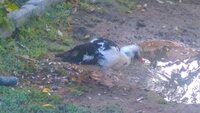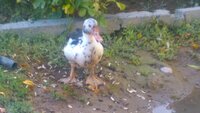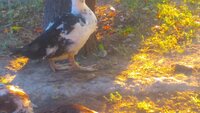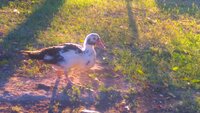Yes they have and evidently you haven't seen how a drake is built or you wouldn't even ask. Chicken hens are not made anatomically to mate by insertion, so there lies the problem. Go study the difference between a drake and a chicken hen, not compatible at all. the best thing you could do would be to get ducks for your drake if that is what you ended up with. and keep the hens away from him.
oh wow. ok *cough* I see that um how that wouldn't work... I guess if it turn out to be a drake I could always give it away.







